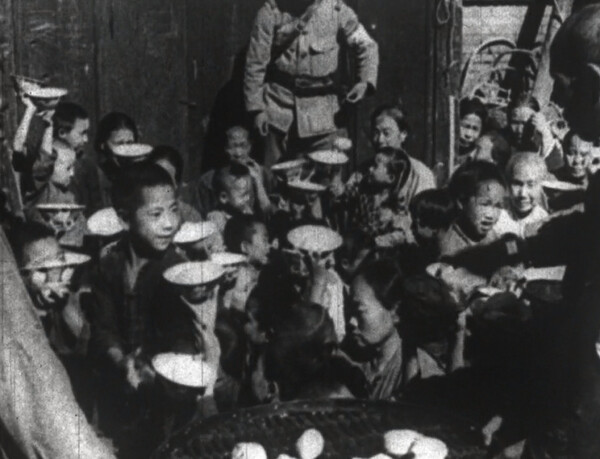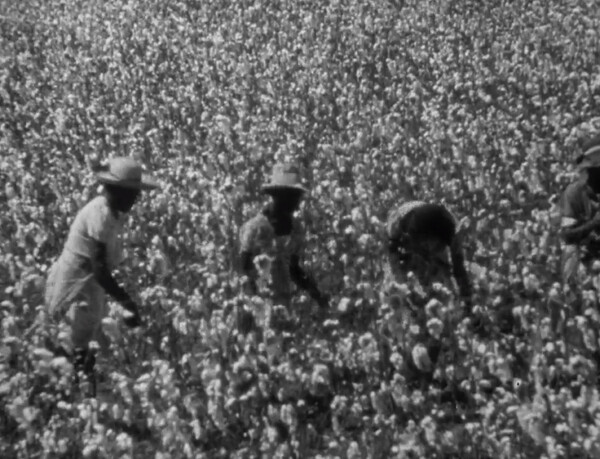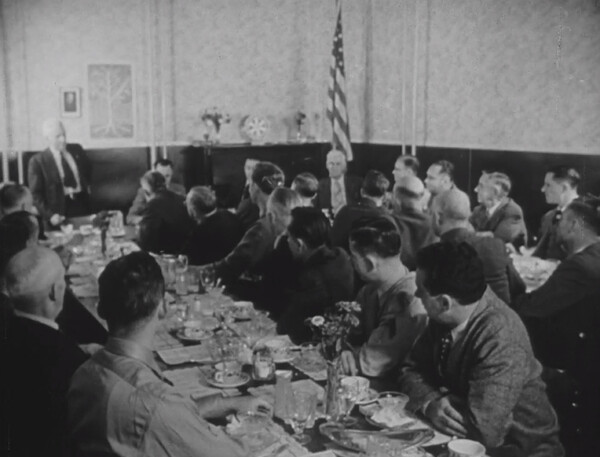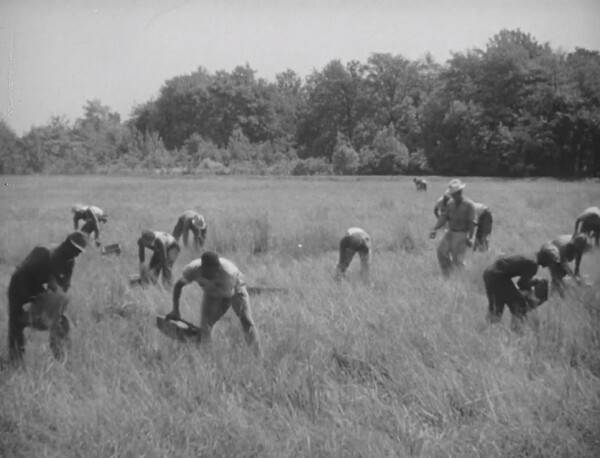Hidden Stories: The Absence of Minorities in USDA Films

Non-Western people were often shown as starving or destitute in the limited screen time they received while minimizing their aid in the war, like these unidentified children in The Gardens of Victory.
Between legalized segregation and widespread racism, minorities were hidden from history and USDA films during the WWII Era. Japanese Americans were one such group. In the aftermath of the attack on Pearl Harbor, Americans expressed widespread mistrust of Japanese Americans due in large part to racism and xenophobia.88 In turn, Japanese Americans were evacuated or otherwise relocated to one of eight relocation centers in the western and midwestern U.S. Many Japanese Americans, especially first generation Americans, were agricultural workers, which heightened employment challenges for the agricultural industry. Instead of working on farms collecting the critical harvests, within internment camps run by former USDA officials in the newly formed U.S. War Relocation Authority, Japanese Americans labored in agriculture for extremely low wages. A base laborer made $12-16 a month inside relocation centers, while farms outside were paying $132-164 a month for basic farm help.89 While Japanese Americans toiled far away from their former locations, their struggles were ignored or minimized. This wasn't just an issue for Japanese Americans, but for migrant laborers in general. For instance, the MPS film Victory Harvest only mentioned that migrant labor was “missing too” and “they also are going to war” when mentioning labor issues.90

When African Americans did appear on screen, they were often in subservant roles and separated from white characters, like this shot from Crops for Combat.
Unfortunately Japanese Americans were not the only minority group to struggle on the American home front. African Americans also grappled with a racist U.S., including the widespread enforcement of Jim Crow laws in the South. Jim Crow legislation was a convergence of laws which permitted legal segregation of citizens on the basis of skin color. In an attempt to flee an overtly racist South and for greater economic opportunity, African Americans were migrating from southern rural life to the urban northern U.S. which lasted until the 1970s.91 While African Americans gained urban wartime jobs, few could participate in calls for farm labor because of the lower pay offered for those positions. Further, many within the community warned of post-war job reversions back to lower wages.92 Although permitted to serve in the military, African American service members were also largely excluded from post-war programs, like the G.I. Bill that aimed at developing middle-class goals for veterans through higher education benefits and easier access to home loans.93 Due to discrimination and racist laws, African Americans worked hard during the war at home and overseas, but saw far fewer gains promised after the war.

Reinactment or actual USDA extension meeting? Either way shows the segregation policies in effect in many places in the U.S. at the time.
Like other governmental services, the USDA provided relatively few resources for African American agricultural workers. The materials and expertise the USDA did give to African American farmers was important and one of the few direct resources available for the betterment of African American farmer owners and workers. In particular, African American county extension agents, of which only 66 of 1,466 were African American in 1917, gave tangible advice and new techniques to increase yields, diversify crops, and increase the standard of living for many rural African Americans.94 The need for this service was high as despite the migration to the urban North, around the wartime years nearly 70 percent of the U.S. African American population still lived in the rural South.95 While helpful, the USDA did not allow African Americans in influential roles within the organization, and contributed to the lowering of the rate of African American farm owners after WWII from the unequal management of policies aimed at industrializing agriculture in the South.96 It’s of little surprise that the MPS rarely included African Americans on film with whites unless in subordinate roles, and the few films featuring African Americans emphasized personal decisions and responsibility instead of societal inequality.97 Although mostly benefiting white farmers and ranchers, the limited attention given to African Americans by the USDA was helpful in a time with scarce resources for minority agricultural workers.
Finally, Latin Americans, particularly Mexicans and Mexican Americans, faced racial discrimination and limited support on the U.S. home front. With rising demand for agricultural products, extra farm and ranch labor was in high demand and many owners turned to Mexican and Latin American foreign labor for cheap help. To ease travel restrictions on this labor pool, the U.S. created the Bracero Program in 1942.98 Mexicans and Mexican Americans grew frustrated with Jim Crow segregation laws throughout the South and made resistance attempts targeted with relaxing racist laws against Latin and Mexican Americans.99 Mexico even objected to the Bracero Agreement in 1943 and 1944 on grounds of the discriminatory practices of American laws. The objection particularly singled out Texas, a state which held a plethora of Jim Crow laws and saw influxes of Mexican braceros due to the shared border with Mexico and restrictions on women’s farm labor.100 The fight for better race relations ultimately advanced little, while migrants and Mexican Americans worked to fill the labor gaps in agriculture and hundreds of thousands of Mexican Americans served in the war.101 The Bracero Program would continue until 1964, as farms evolved to utilize machinery, reducing their dependence on cheap labor.102 Like the other minority groups mentioned, Mexican Americans were told to put their grievances on hold in the name of democracy and by the end of the war saw little progress from racial discrimination.





